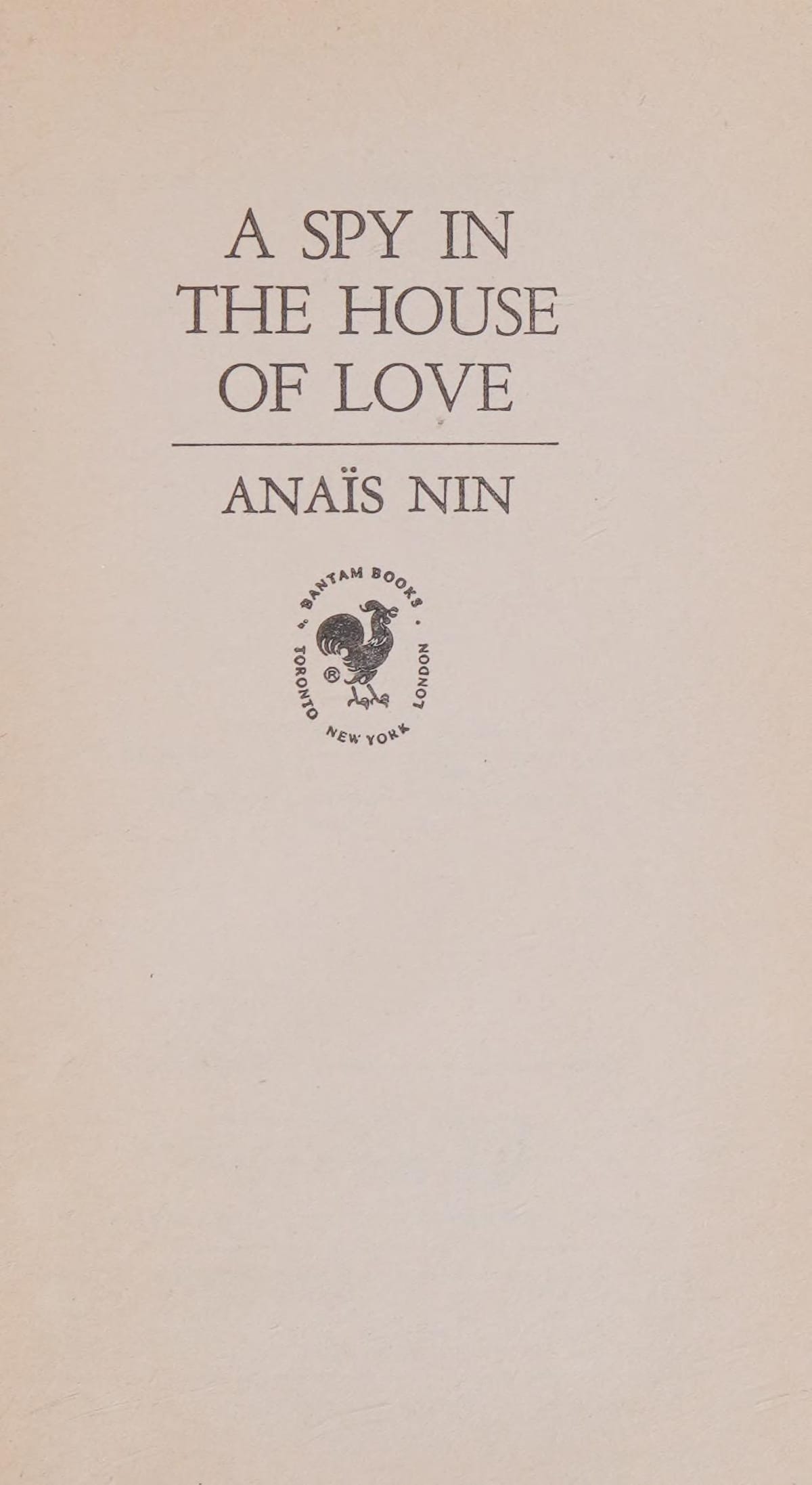A Spy in the House of Love: Unmasking Desire, Deception, and Self-Discovery
Explore Anaïs Nin's provocative 1954 novel A Spy in the House of Love—plot, themes, and modern relevance in an 800-word analysis.

Introduction
Anaïs Nin’s 1954 novel A Spy in the House of Love remains a provocative exploration of erotic longing, duplicity, and the search for an authentic self. Part of Nin’s continuous "Cities of the Interior" cycle, the book follows Sabina, an actress who slips between lovers as easily as she changes costumes, all while fearing the exposure of her secret life. Seventy years later, the novel still seduces new readers with its lyrical prose and daring psychological insight. In this article, we revisit the story, uncover its key themes, and consider why it continues to matter in today’s conversations about gender, identity, and freedom.
Origins of the Title
The title comes from the idea that when passion turns covert, every lover becomes both participant and observer—an internal spy stationed within the fragile walls of intimacy. Nin, who drew heavily on her own diaries and relationships, invokes espionage not for cloak-and-dagger intrigue but to dramatize the tension between what we desire and what we reveal. The “house” is the realm of love itself, constructed out of vows and expectations, and Sabina’s furtive movements echo the clandestine surveillance many people conduct on their own hearts.
Plot Summary
Set in post-war New York, the novel centers on Sabina, a striking woman of mixed European and North African heritage. Married to the gentle Alan, she spends her afternoons and evenings drifting into affairs with men who answer specific facets of her multifaceted personality. While Alan represents stability and devotion, the painter Philip satisfies her need for artistic understanding, and the drummer Mambo offers raw, visceral excitement. Aware of her duplicity, Sabina fears exposure by a recurring telephone confessor—a mysterious voice that seems to know every detail of her escapades. As guilt and anxiety build, Sabina oscillates between a yearning for transparency and a paralyzing dread of being found out. Ultimately, she must confront both Alan and her own reflection, recognizing that the spy she fears most may be her own divided self.
Themes and Analysis
Identity and Performance
Nin uses Sabina’s profession as an actress to illustrate how identity can be a fluid performance rather than a fixed essence. Sabina tailors her persona to each lover, slipping into roles that grant temporary liberation yet deepen her fragmentation. This motif anticipates modern discussions of performativity—how individuals curate selves for different audiences on social media, in workplaces, and at home. The novel suggests that the masks we create can both empower and imprison us, especially when we lose sight of the face beneath.
Desire and Betrayal
Desire in A Spy in the House of Love functions as both a catalyst for self-discovery and a gateway to betrayal. Nin refuses to moralize Sabina’s adultery; instead, she interrogates why conventional monogamy fails to satisfy her protagonist’s layered needs. Sabina’s betrayals, however, carry emotional consequences. When she senses that all her lovers are converging in a single moment of truth, panic takes hold: she is not merely afraid of losing them but of losing the multiplicity of selves they allow her to express. Nin thus frames betrayal less as a sin against others and more as a rupture within the self.
Literary Significance
Upon publication, the novel shocked many critics with its candid portrayal of female sexuality. Yet its stylistic daring is equally noteworthy. Nin adopts a stream-of-consciousness technique that blends dream, memory, and sensory detail, creating a lush interior landscape. Feminist scholars later hailed the book as a precursor to second-wave explorations of female desire, while postmodern theorists admired its fragmentation and refusal of linear narrative. In classrooms today, the novel is prized for illustrating how literature can challenge dominant narratives about women’s roles and sexual autonomy.
Why It Matters Today
Contemporary readers may find Sabina’s struggle eerily familiar. In an era of dating apps, polyamorous communities, and curated online identities, questions about authenticity resonate more than ever. The novel invites us to ask: How many versions of ourselves do we carry? How honest can we be with partners when we are evasive with ourselves? By centering the female gaze and granting Sabina agency—albeit conflicted—Nin anticipates twenty-first-century debates about bodily autonomy and the politics of pleasure.
Conclusion
A Spy in the House of Love endures because it illuminates a timeless paradox: the closer we come to another person, the more acutely we sense our own secrecy. Nin’s lyrical prose captures the thrill of forbidden desire while exposing the psychic costs of living in fragments. Whether approached as an erotic confession, a feminist manifesto, or a psychological case study, the novel rewards readers with nuanced insight into the labyrinth of human intimacy. As long as questions about love, loyalty, and self-invention persist, Sabina’s story will continue to whisper through the corridors of our own houses of love, urging us to confront the spies within.



